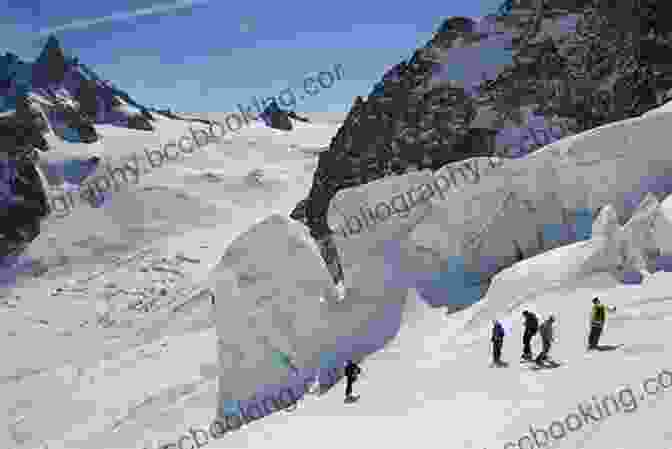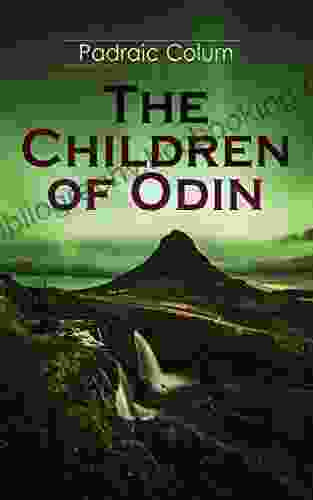The Story of Skiing and the Future of Snow

4.3 out of 5
| Language | : | English |
| File size | : | 7614 KB |
| Text-to-Speech | : | Enabled |
| Screen Reader | : | Supported |
| Enhanced typesetting | : | Enabled |
| X-Ray | : | Enabled |
| Word Wise | : | Enabled |
| Print length | : | 288 pages |
| Lending | : | Enabled |
Skiing is one of the oldest and most popular winter sports in the world. It has been practiced for centuries, and over time, it has evolved from a way of getting around to a recreational activity and a competitive sport.
In this article, we will explore the history of skiing, from its humble beginnings to its modern-day popularity. We will also discuss the future of skiing in the face of climate change. Despite the fact that some experts say the winter sports industry is on the decline due to a rapidly warming climate, there are measures that can be put in place to help preserve this industry and the millions of dollars in revenue it generates.
The History of Skiing
The earliest evidence of skiing dates back to around 2500 BC, when skis were used as a mode of transportation in Scandinavia. These early skis were made of wood and were very simple in design. They were typically straight and narrow, with a turned-up tip at the front. Bindings were made of leather or hide and were attached to the skier's boots.
Skiing was less common in later centuries and largely remained a method of transportation for those who lived in snowy climates. However, there are records that some communities in Scandinavia held ski jumping competitions among themselves.

In the 18th and 19th centuries, skiing began to gain popularity as a recreational activity. This was due in part to the development of new ski designs and bindings, which made skiing more accessible and enjoyable. In 1850, Norwegian skier Sondre Norheim is credited with inventing the Telemark turn, which is a basic skiing maneuver that allows skiers to turn and control their speed.
By the early 20th century, skiing had become a popular sport around the world. The first Winter Olympics were held in 1924, and skiing was one of the featured sports. In the years since, skiing has continued to grow in popularity, and it is now one of the most popular winter sports in the world.
The Future of Skiing
The future of skiing is uncertain. Climate change is causing winters to become shorter and warmer, and this is having a negative impact on the ski industry. Many ski resorts are having to close earlier in the season, and some are even closing permanently.

However, there are a number of things that can be done to mitigate the effects of climate change on skiing. Ski resorts can invest in snowmaking technology, which can help to extend the ski season. They can also work to reduce their carbon footprint, which will help to slow the pace of climate change.
Ultimately, the future of skiing depends on our ability to address climate change. If we can take action to reduce greenhouse gas emissions, we can help to ensure that future generations will be able to enjoy the sport of skiing.
Skiing is a sport with a rich history and a bright future. Despite the challenges posed by climate change, there are a number of things that can be done to ensure that skiing continues to be a popular sport for generations to come.
Call to Action
If you are interested in learning more about the history of skiing or the future of snow sports, I encourage you to check out the following resources:
- International Ski Federation
- Skiing History
- Snowsports Museum
You can also help to support the future of skiing by:
- Reducing your carbon footprint
- Supporting ski resorts that are committed to sustainability
- Donating to organizations that are working to protect the environment
By taking these actions, you can help to ensure that future generations will be able to enjoy the sport of skiing.
4.3 out of 5
| Language | : | English |
| File size | : | 7614 KB |
| Text-to-Speech | : | Enabled |
| Screen Reader | : | Supported |
| Enhanced typesetting | : | Enabled |
| X-Ray | : | Enabled |
| Word Wise | : | Enabled |
| Print length | : | 288 pages |
| Lending | : | Enabled |
Do you want to contribute by writing guest posts on this blog?
Please contact us and send us a resume of previous articles that you have written.
 Book
Book Novel
Novel Page
Page Chapter
Chapter Text
Text Story
Story Genre
Genre Reader
Reader Library
Library Paperback
Paperback E-book
E-book Magazine
Magazine Newspaper
Newspaper Paragraph
Paragraph Sentence
Sentence Bookmark
Bookmark Shelf
Shelf Glossary
Glossary Bibliography
Bibliography Foreword
Foreword Preface
Preface Synopsis
Synopsis Annotation
Annotation Footnote
Footnote Manuscript
Manuscript Scroll
Scroll Codex
Codex Tome
Tome Bestseller
Bestseller Classics
Classics Library card
Library card Narrative
Narrative Biography
Biography Autobiography
Autobiography Memoir
Memoir Reference
Reference Encyclopedia
Encyclopedia Intelligent
Intelligent Toby Wilkinson
Toby Wilkinson Hwei P Hsu
Hwei P Hsu Tom Flanagan
Tom Flanagan Tadashi Yoshimura
Tadashi Yoshimura Inc Complex Media
Inc Complex Media Ismar Schorsch
Ismar Schorsch J Michael Holloway
J Michael Holloway Ian Macdonald
Ian Macdonald Irene Danics
Irene Danics J Best
J Best Instafo
Instafo Ian Brown
Ian Brown Zitkala Sa
Zitkala Sa Jack Freeman
Jack Freeman J Budziszewski
J Budziszewski J Thorn
J Thorn Jamie Reed
Jamie Reed Hugues De Montalembert
Hugues De Montalembert Inger Mewburn
Inger Mewburn
Light bulbAdvertise smarter! Our strategic ad space ensures maximum exposure. Reserve your spot today!

 Jaden CoxThe Dwellers In Asgard, Odin The Wanderer, The Sword Of The Volsungs And The....
Jaden CoxThe Dwellers In Asgard, Odin The Wanderer, The Sword Of The Volsungs And The....
 Demetrius CarterThe Life and Times of an Entrepreneur: Unraveling the Mindset, Strategies,...
Demetrius CarterThe Life and Times of an Entrepreneur: Unraveling the Mindset, Strategies,...
 Jonathan HayesRomeo and Juliet by Tom Stoppard: A Literary Masterpiece That Transcends Time
Jonathan HayesRomeo and Juliet by Tom Stoppard: A Literary Masterpiece That Transcends Time
 Nathaniel HawthorneUnveiling the Tapestry of Life, Love, and Fashion: A Journey through Time...
Nathaniel HawthorneUnveiling the Tapestry of Life, Love, and Fashion: A Journey through Time...
 William Powell365 Days of Endless Creativity: Unleash Your Imagination with "365 Things to...
William Powell365 Days of Endless Creativity: Unleash Your Imagination with "365 Things to... Ernest ClineFollow ·19.7k
Ernest ClineFollow ·19.7k Mario Vargas LlosaFollow ·9.4k
Mario Vargas LlosaFollow ·9.4k Maurice ParkerFollow ·19.7k
Maurice ParkerFollow ·19.7k Jaden CoxFollow ·14.5k
Jaden CoxFollow ·14.5k Michael SimmonsFollow ·19.8k
Michael SimmonsFollow ·19.8k Terry BellFollow ·9.1k
Terry BellFollow ·9.1k Jayson PowellFollow ·2.9k
Jayson PowellFollow ·2.9k Dwight BellFollow ·2.8k
Dwight BellFollow ·2.8k

 Luke Blair
Luke Blair101 Amazing Facts About Australia: A Journey Through the...
A Literary Expedition Unveiling the Treasures...

 Harry Hayes
Harry HayesWitness the Velocity and Legacy of the Scarlet Speedster:...
Delve into the Lightning-Charged...

 Stan Ward
Stan Ward101 Amazing Facts About Ancient Egypt: Unraveling the...
: A Timeless Realm of Wonder Ancient Egypt, a...

 Stephen King
Stephen KingEscape into Adventure: Unveil the Secrets of Adventure...
In the annals of comic book history,...

 Forrest Blair
Forrest BlairThe Oxford Dog Training Company Presents: A Holistic...
In the realm of dog...
4.3 out of 5
| Language | : | English |
| File size | : | 7614 KB |
| Text-to-Speech | : | Enabled |
| Screen Reader | : | Supported |
| Enhanced typesetting | : | Enabled |
| X-Ray | : | Enabled |
| Word Wise | : | Enabled |
| Print length | : | 288 pages |
| Lending | : | Enabled |




